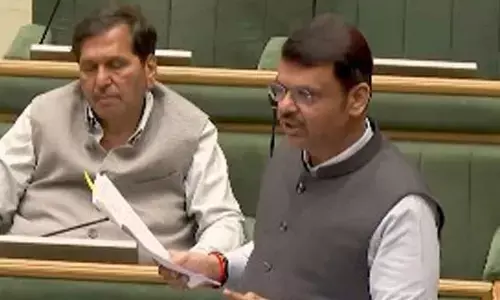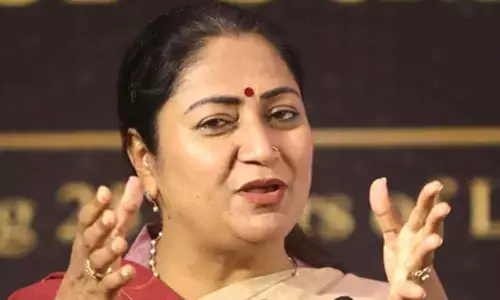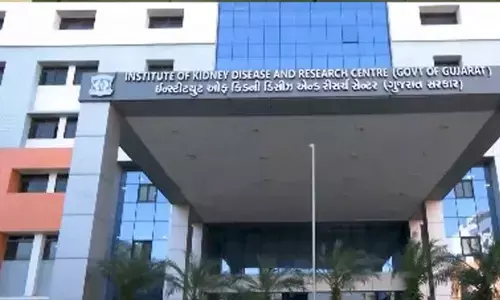Digitally transforming agriculture

Digitally transforming agriculture
India's agriculture sector has continued to grow in leaps and bounds, especially in terms of output- driven by a rising population and increasing external demand
India's agriculture sector has continued to grow in leaps and bounds, especially in terms of output- driven by a rising population and increasing external demand. In 2022 alone, the country covered almost half of the global rice market. The country is also one of the largest producers of spices, milk, and pulses in the world and has the largest dedicated land for rice, wheat, and cotton in the world. But, transforming the Indian Agri space to make the country a global leader in food production involves leveraging agritech which is a major focus in the crop protection sub-sector.
At the moment, a sizable part of farmers' yield is still lost to pests and diseases during cultivation and storage. Industry stats show a low penetration and adoption of insecticides and soil energisers which can help protect crops and boost productivity. Where they are used, the application often lacks precision and is not targeted at areas where they are specifically needed. This is where technology becomes important. Without the adoption of crop protection technology, farmers will continue to use crop protection products traditionally.
Rising agritech profile: The place of government and private players
The place of Artificial Intelligence (AI), Internet of Things (IoT), and Machine Learning (ML) in the agricultural space cannot be overemphasized. Thankfully, the country is already taking major steps to digitally transform. There were at least 1,000 agriculture (agritech) startups in India as of March 2022 that were employing AI, IoT, and ML, with funding to the agritech sector surpassing $1.6 billion by 2021. Within the period of 2017 to 2020 alone, agritech startups attracted equity investments to the tune of Rs 66 billion, growing at 50 percent.
It is impossible to ignore the effort of the governments (at the central and regional levels) in the Indian agritech revolution. From the Digital India Initiative which fosters connection to other parts of the world to the India Digital Ecosystem of Agriculture (IDEA) which seeks to boost the incomes of farmers, the Electronic National Agriculture Market (eNAM), the National Mission for Sustainable Agriculture (NMSA) which promotes the integration of technologies to boost agri output, and the National e-Governance Plan in Agriculture (NeGPA) set up to provide funding for modern tech acquisition in agriculture, there's a lot the government is doing.
The Innovation and Agri-Entrepreneurship Development programme is a noteworthy initiative introduced by the Rashtriya Krishi Vikas Yojana (RKVY) in 2018-2019. It was set up to nurture the incubation ecosystem and provide funding for startups. This has led to the adoption of 24 agribusiness incubators by the RKVY for the programme. On the other hand, private players in the sector, especially producers of crop protection products and technologies, have continued to revolutionise and build on existing technologies to provide smart solutions. Collaborations have also been secured with tech brands to see how India's growing agriculture space can become a platform for innovation and efficiency. But as these technologies emerge, farmers must show a willingness to adopt them for their own benefit and that of the nation at large.
Trends in AI, IoT, and ML applications in agriculture
There's a lot that tech can do in agriculture, including in areas like cultivation, harvesting, weeding and insecticides application, monitoring and pest control surveillance, ploughing and many others. Worthy of note is the application of AI drones in spraying insecticides on farms. This is a rising global trend and is fast gaining popularity in India as well. Here, farmers avoid direct exposure to insecticides and this also helps improve precision. Crop monitoring is also better done with AI, especially with the use of computer vision algorithms. This will not only reduce labour dependency and save on water usage but also significantly boost yield.
A study published in the Indian Journal of Entomology showed that India was losing about 50 per cent of yields in cotton as recently as 2005, with reports showing losses of between 20 per cent and 40 per cent in other crops like sorghum, rice, oilseeds, and maize. Such losses can be prevented with the proper and judicious use of crop protection products.
Application by such AI drones can be an added advantage because farmers are able to detect infestation on time and deploy technology to stop its spread based on AI. At the other end of the stick are information sourcing and management. With capabilities like soil monitoring, weather prediction, and multi-crop harvesting at a local level, farmers are better guided to yield better harvests.
Experiments are also ongoing in AI-enabled robotics and smart or driverless tractors on farms. While these are still largely uncommon in India, several other nations have begun to invest heavily on these technologies to reduce the demand for scarce labour on farms as well as reduce manual workload. This will definitely be a turning point in the Indian agritech space when fully adopted and deployed. With EY projections suggesting India's agriculture sector will register a CAGR of 4.9 per cent between 2022 and 2027, and the agritech market reaching $24 billion by 2025, India can become the food capital of the world if the proper investments are made in tech.
A peep into the future
There's already a lot going on in the sector and a lot more can happen. Kisan Drones are already started being utilised for crop assessments, land records, and insecticide spraying, and are projected to usher in a new era of technology in agriculture and farming. However, this is only the tip of the iceberg when compared with the huge potential that AI, IoT, and ML can offer. As the nation's population continues to grow along with global numbers, the demand for food will continue to increase while land available for agriculture will reduce further following urbanisation. The door to sustainable food production is a technology and only the right policies and investments can unlock it.
(The author is a Managing Director, Insecticides (India) Ltd.)














